Insect DefinitionThe word insect has been derived from the Latin word - insectum, which means "having a cut or a divided body." When we say the word insect, the first impression that comes to our mind is of a small-sized animal or pest that crawls and spreads diseases, but speaking in biological terms, insects are living organisms belonging to the class Insecta. There are many species of insects ranging from small ones like ants to larger ones like stick insects, and they are often termed as the most diversified class of organisms. There exists about a million insect species which account for an estimated ninety percent of the animal population known to exist on the Earth. Whether grasslands, deserts, wetlands, or oceans, insects are found in almost every environment and habitat. Almost all insects are egg-hatched creatures; most use legs or wings for locomotion. Some of the insects which dwell in and around water are capable of swimming too. An insect's general features include an exoskeleton, i.e., an outer skeleton, a tri-segmented (divided into three parts) body, and jointed legs. 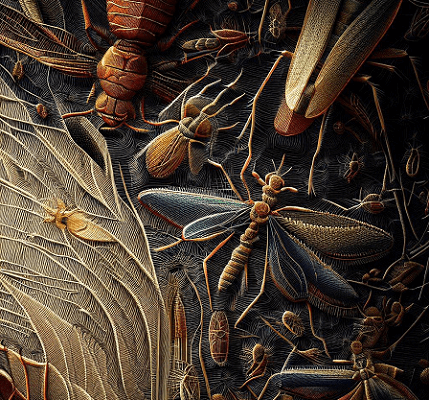
Evolution and History of InsectsInsects have been known to exist on Earth for a very long time. Scientists estimated that insects originated about 480 million years ago in the Ordovician Period. Since then, these creatures have evolved and adapted from time to time to Earth's changing environment and climate. The Permian Period saw the evolution of most present-day insect species. Considered the biggest mass extinction in Earth's history, the Permo-Triassic mass extinction, which occurred about 252 million years ago, caused the demise of many early insect species. The Triassic Period (252 to 201 million years ago) saw the emergence of what are essentially the current insect orders that still exist today from the survivors of this catastrophe. With some exceptions, almost all the modern-day insect families are known to be of the Jurassic Era (201-241 million years ago). Several highly successful insect groups, including the Hymenoptera (wasps, bees, and ants), Lepidoptera (butterflies), as well as numerous types of Diptera (flies) and Coleoptera (beetles), evolved alongside flowering plants during the Cretaceous Period (145 to 66 million years ago), providing an essential illustration of co-evolution. The Cenozoic Period, which began around 66 million years ago, saw the evolution of many current insect subfamilies. Insects from this time onward were commonly preserved in amber, of which most were found to be in excellent shape. These specimens may easily be matched to living species, and most belong to the same. Insect MorphologyAs stated earlier, insects have a tri-segmented body which includes the upper part- the head, the middle part- the thorax, and the last part- the abdomen. Unlike other terrestrial animals, insects have an exoskeleton. 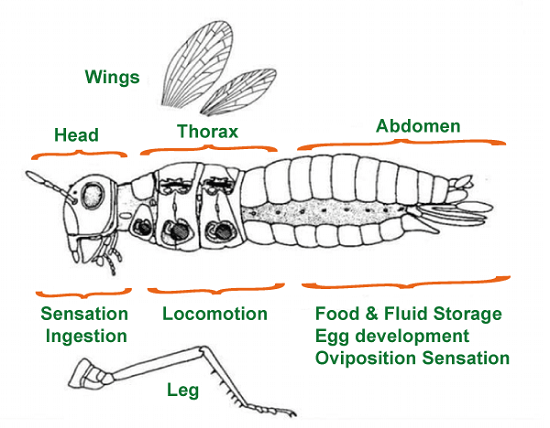
1) Head:Most insects have rigid, strongly sclerotized exoskeletal head capsules surrounding their heads. The fact that most primary sensory organs, such as the antennae, ocelli, and compound eyes, are located in the head capsule makes it sensible and logical. The head also consists of the insect eye, the most noticeable structure in this region. The eyes of insects are made up of material units called ommatidia, which can be present in numbers as large as thirty thousand in a single eye. The following structure in an insect's head is the antennae which are responsive appendages on its head. The antennae can detect touch and have microscopic sensory organs that enable insects to detect scents, heat, pressure, moisture, and possibly even their position in space. Mouthparts are another vital region of an insect head comprised of the maxilla, labium (the upper lips), and in some species, the mandibles (the jaws). These mouthparts are used for different purposes depending on the insect species. Insects like mosquitoes have stylets- needle-like structures formed by maxillae. They serve the purpose of piercing through the skin of other animals when they suck blood. 2) Thorax:The thorax is the middle segment, which lies between the insect's head and the abdomen. This region is further subdivided into three parts- the prothorax, mesothorax, and the metathorax. The prothorax is the part located closest to the insect head. This region consists of the initial pair of legs and the pronotum. The next segment of the thorax is the mesothorax. It is in this part where the second pair of legs or insect wings (if any) lies. The third and the last posterior thoracic segment, which borders the abdomen, is metathorax. This region has a third set of legs and back wings. The pterothorax is the name given to the mesothorax and metathorax because both hold wings. Two pairs of wings are seen on the second and third thoracic segments of almostevery species of phylogenetically developed insects. Being invertebrates, only insects have evolved the ability to fly?the muscles of the thorax region power the wings. The following structure found in the thorax region is insect legs. Typically, the leg is divided into several segments. The first is coax, followed by the trochanter, femur, tibia, tarsus, and pretarsus. 3) Abdomen:Out of the three segments of an insect's body, the last one is the abdomen, in contrast to the two upper segments, i.e., the head and thorax. The abdomen usually comprises up to twelve segments and is way less sclerotized. A tergum and sternum indicate each section of the abdomenand possibly a pleurite. 11 abdominal sections exist during the embryonic phase of several insects and the postembryonic phase of primitive insects. Although there is a trend for present-day insects to have fewer abdomen divisions, the original number of 11 sections remains intact during the embryogenic phase. The initial seven sections of the abdomen in insects are alike in structure and have no appendages. In the following sections, insects have their reproductive and excretory organs. Some aquatic insects like silverfish and bristletails have appendages in this region when they are newly born. Reproductive organs or genitalia: The term "external genitalia" refers to a group of organs primarily internal but involved explicitly in mating and egg depositing. These organs in insects can take a wide variety of forms and usually have significant taxonomic importance, especially among varieties with structural similarities. The female external genitalia in insects appears less complex and fluctuating, but on the other hand, male genitalia may extensively vary from one species to another. For this reason, male genitalia is an important factor used to distinguish between these species. The female genitalia is composed of organs for both ovulation and copulation. Insect Integumentary SystemsIntegumentary systems in insects include the nervous, respiratory, circulatory, reproductive, digestive, and endocrine systems. These systems in insects have been explained below: 1) Nervous System:An insect's brain and ventral nerve cord make up the neurological system of the creature. Six fused segments comprise the head capsule, each with two ganglia -a clusters of nerve cells outside the brain. The initial three ganglia pair are merged to form the insect's brain. In contrast, the remaining three pair are merged to form the subesophageal ganglion, an organ with three pairs of ganglia beneath the invertebrate's esophagus. Several insect species possess nociceptors that consist of pain-sensing and transmitting cells. This was determined by scientists in the year 2003. Although the sense of smell has been observed in insects, it is debatable if they are conscious of the pain they suffer. 2) Respiratory System:Respiration in insects is achieved without lungs. In the absence of lungs, the functioning of the respiratory system in these creatures is accomplished by using a network of inner passages and bag-like chambers which allow the gases to either diffuse or aggressively push. This aggressive action on gases helps provide oxygen to the tissues directly through the trachea. Because oxygen is distributed directly, the circulatory system's workload is significantly reduced, and it does not require to transport oxygen. The respiratory system in insects lacks organs like veins or arteries; instead, it has a single, porous dorsal tube that pumps through peristaltic movements. 3) Circulatory System:An insect's circulatory system consists of its body fluid (hemolymph), the heart, and a dorsal vessel. The primary purpose of insect blood is the transportation of nutrients and metabolic waste. It plays a role in osmoregulation, thermal management, and immunity, preservation of water, carbohydrates, lipids, and skeletal functionality. Additionally, it is crucial to the process of molting. The hemolymph may also serve as a barrier against predators in certain species. It may contain unpleasant compounds to smell or taste and can ward off predators. 4) Reproductive System:The vast majority of insects breed oviparously. The female produces the eggs in a pair of ovaries. During intercourse, the male transmits sperm, produced in a single or possibly two testicles, to the female through the external genitalia, a set of spermathecae within the female host of the sperm. The eggs, to be fertilized by the sperm, move through the oviducts. Eventually, the eggs are then laid via an ovipositor. 5) Digestive System:Before being utilized by body cells for energy, development, or procreation, the food must first be broken down by breakdown reactions into smaller units like amino acids and simple carbohydrates. This process of food breakdown is referred to as digestion. The alimentary canal (the gut) extends longitudinally through an insect's body. It is the primary component of the digestive system. Food passes via the alimentary canal and is directed from the mouth to the anus. A great deal of an insect's digestion occurs in the gut. The foregut, midgut, and hindgut are three parts, each carrying out a particular digestion. In addition to having an alimentary canal, insects possess coupled salivary glands and reservoirs. Usually, the foregut and these components are located together in the thorax. The foregut is the very first portion of the alimentary canal. For protection against complicated food, the foregut has a cuticular coating consisting of chitin and proteins. The process of digestion initiates in this region. Here, saliva breaks down the partly chewed food into simpler units. After passing through the foregut, the food then enters the next region, i.e., the midgut. It is commonly referred to as the mesenteron. Almost all of the digestion occurs in this region. The next and last portion of the alimentary canal is the hindgut, also called the proctodaeum. Here, the undigested food particles are adhered to by uric acid and lead to the formation of fecal lumps. 6) Endocrine System:Just like any other organism, an insect's endocrine system is formed by several glands, namely- the neurosecretory glands, the cardiac corpus glands, the Prothoracic glands, and the corpora allata glands. In addition to producing neurohormones, the invertebrate's endocrine system generates hormones that regulate molting, diapause, reproduction, osmosis metabolism, and contractions of muscles. Extrasensory Perceptions in Insects:Numerous insects have extraordinarily sensitive and developed sensory organs. Some are listed below: 1) Eyesight and Light Production in Insects:Most can distinguish between light and dark except for certain varieties of cave-dwelling insects. They have keen vision that can pick up even the slightest motions. Bioluminescence is a property possessed by some insect species. The Lampyridae species of beetles, which includes the fireflies, is the most widely recognized bioluminescent insects in the world. Other species, like Poduridae, Onychiuridae, Mycetophilidae, etc., also possess this property. 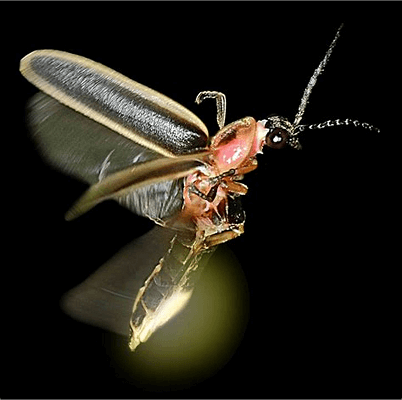
2) Sound Production and Hearing:Insects were the first creatures capable of producing and perceiving sound. An insect's appendages, like legs and wings, often operate mechanically to produce sound. Stridulation is a term given to this way of sound production. Some insects are capable of hearing ultrasonic frequencies. Since bats emit ultrasonic sounds to detect and catch their prey, this ability lets these insects know if bats have detected them. A variety of insect species can emit shallow sounds. The motion of an insect is what produces these low noises. The natural sounds of an insect's movement get amplified by minute stridulatory organs on its appendages. This is occasionally utilized to warn or interact with others. Several Hemiptera species, like the corixids (commonly known as the water boatmen), use underwater sounds for communication. 3) Chemical Communication:Insects communicate chemically using various senses, including smell and taste. Semiochemicals are information-conveying substances designed to attract, repel, and transmit information. The two main categories of semiochemicals are pheromones and kairomones. The butterfly Phengaris arion is an illustration of a predator that employs chemical signals as a kind of imitation to lure its prey. A wide variety of insects have developed chemical communication techniques besides using sound for the same. These semiochemicals, such as those with instructive or attractive properties, originate from plant compounds. Locomotion in Insects:Most insect species perform locomotion by walking, flying, or swimming. 1) Locomotion by Walking or Crawling:It has been observed that in most insect species, the adults walk with six legs. They use an alternate wobbly stance to walk. A study on ants and cockroaches says that this unusual tripod stance enables them to walk more quickly and provides stability. In fast-moving insects, the tripedal walk is demonstrated in its simplest form. Although not fixed, this movement mode allows for a wide range of insect motions. This includes slow-paced walking, turning around obstacles, climbing, etc. 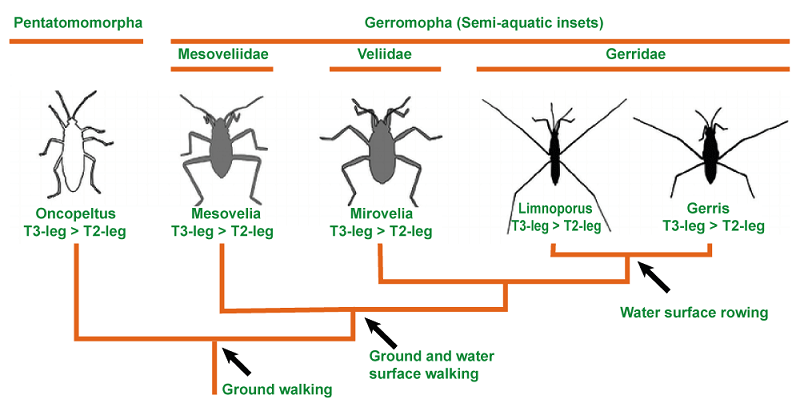
2) Locomotion by Swimming:Plenty of insects spend all or a significant portion of their lifespan below water. In many primitive insect species, the early phases after birth occur in an aquatic habitat. Some species of beetles have been known to have aquatic adults too. Many of these creatures have modifications that make it easier for them to move underwater. They have modified their legs to resemble paddles. Dragonfly naiads push water out from their rectal chambers using jet propulsion. Like water striders, certain species can move across the water's surface. 3) Locomotion by Flight:The insect family is the sole class of invertebrates that have acquired flight. Many people disagree on how insect wings evolved. It is suggested by some entomologists that the insect wings originate from either from parental lobe or the appendages from their cuticles. Some speculations include claims suggesting that wings emerged from altered appendages like gills, spiracular flaps, or an epicoxa. According to this idea, an appendage near the bottom of the legs or coxa gives insects their wings. The longest wingspan of a flying insect nowadays is about 0.28 meters (or 12 inches). Several Meganeura dragonflies from the Carboniferous period had wingspan measurements of up to 0.5 meters broad. Defense and Predation in InsectsCompared to other, more giant creatures, insects tend to have soft bodies, are frail, and are somewhat defenseless. All phases of an insect's life are vulnerable to parasitism and predation because, during the juvenile stages, they are small in size, move slowly, or are, in some cases, motionless. To protect themselves against predators or parasitoids, insects use several defense mechanisms. 1. Camouflage:A crucial defensive tactic is camouflage, which uses color or shapes to blend in with the surroundings. For example, many leaf beetle species, or weevils, commonly have this protective coloring in beetle families. Many of these species have sculpting, scaling, or hairs of different colors that make them resemble bird dung or other unpalatable objects. 2. Imitation or Mimicry:Imitation or mimicry is another sort of defense technique that frequently fools potential threats using color or shape. Although longhorn beetles are not dangerous, their resemblance to wasps helps plenty of them avoid predators. Natural selection and genetic variation result in the development of edible insect species that imitate inedible species to obtain an edge over others. 3. Chemical Defence:Chemical defense is another effective method usually demonstrated by species with bold colors. Monarch butterflies and other insects belonging to Coleoptera and Lepidoptera species use this defense method. These insects become hazardous by storing chemical substances in their tissues from the vegetation they consume. Some are even capable of forming toxins. Ecology of InsectsThe empirical study of how insects interact with their immediate surroundings or is known as insect ecology. Insects provide a variety of crucial tasks in their ecosystems, including soil churning and ventilation, excrement disposition, insect prevention, pollination, and wildlife sustenance. For instance, consider how beetles, which are scavengers that consume dead animals and downed trees, recycle biological components into forms that other creatures may use. These insects and a few other animals primarily regulate the process that produces topsoil. 1. Insects as DecomposersInsects that consume decayed or deceased animals and plant matter are known as decomposers. These insects, also known as saprophagous, can be divided into three groups based on their primary sources of nutrition. They are - insects feeding on deceased creatures, dead plants, and those feeding on animal excreta, respectively. A greater area gets exposed when dead plants get eaten away. This allows the decomposition of the plants to occur more quickly due to a spike in the number of microbes consuming the plant. Insects contribute significantly to the development of the humus. These creatures produce most minerals, carbon, and nitrogen plants required for growth. 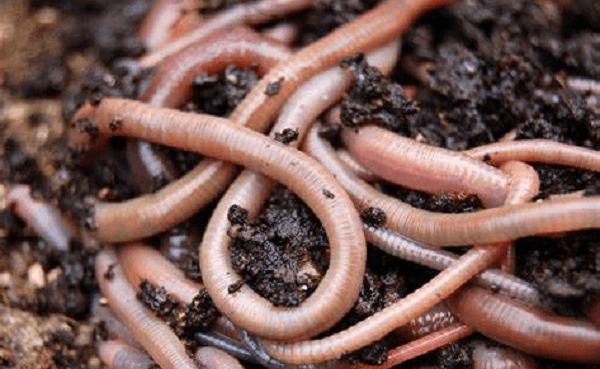
2. Insect as PollinatorsMost flowering plants depend on other animals to transport pollen grains. Even though other animals also contribute to pollination, insects carry out a significant amount of it. It is an excellent example of mutual dependence as these pollinating insects typically profit from these plants in the form of energy-laden nectar. Many flower characteristics preferentially draw one type of pollinator over others, and these developed due to complicated plant-animal adaptations. Bright colors, particularly UV, and attractive pheromones help pollinators locate flowers. Anthecology is the scientific study of pollination by insects. 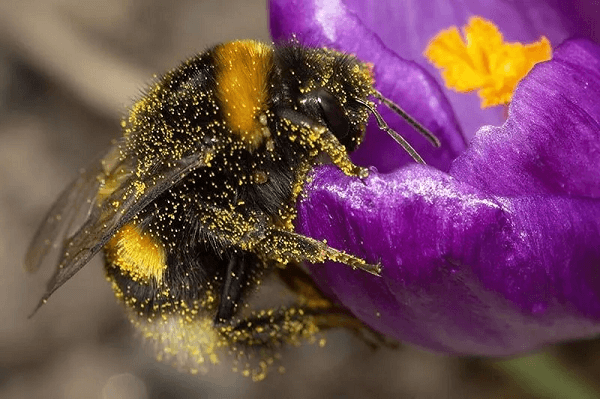
Moths and butterflies have lengthy proboscides and furry bodies that can penetrate deeply into tubular flowers. Butterflies primarily fly during the day and are attracted to pink, pale purple, or purple blooms. These flowers are frequently vast and fragrant, and stamens are positioned so pollen is dropped on the insects each time they consume the nectar. 3. Insects and their Relation with HumansHumans regard most of the insects as pests, a majority of which include the parasitic (lice and bedbugs), disease carriers (flies and mosquitoes), or the ones causing damage to our crops (locusts). Apart from pests being among insects in the limelight, other insects are good for the environment and humans. Bees, butterflies, and ants are among those which help in cross-pollination among plants. This is an example of a mutual work process between plants and insects. There are several industrial products that insects produce. For example, bees produce wax and honey; silkworms produce silk, and so on. In some parts of the world, insects are also used in traditional diets. Insects are crucial to our ecosystem and play vital roles in the food chain and ecological balance.
Next TopicMolarity Formula and Definition
|
 For Videos Join Our Youtube Channel: Join Now
For Videos Join Our Youtube Channel: Join Now
Feedback
- Send your Feedback to [email protected]
Help Others, Please Share










